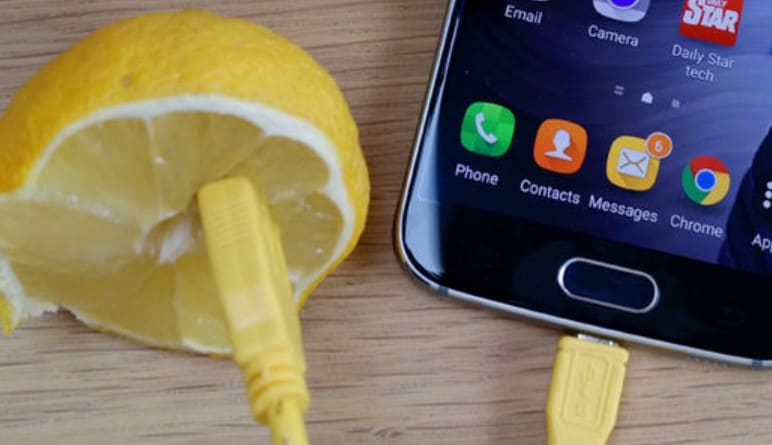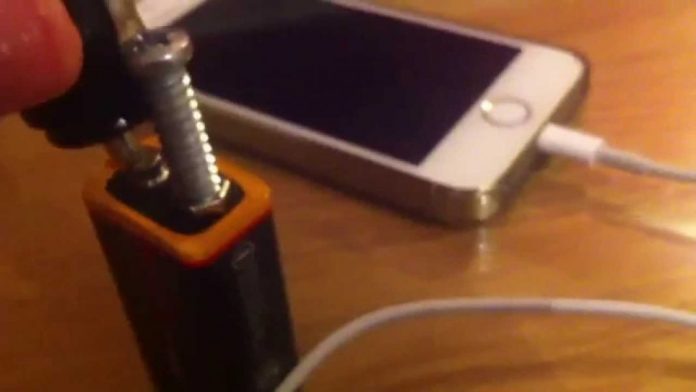A smartphone may seem like a luxury to some of you, but the painful truth is that nowadays it’s challenging to manage without one. From playing the part of the friendly neighborhood stalker on social media to paying monthly bills, smartphones are a must-have. Most importantly, it could become a vital tool in a survival-type situation. Even if you don’t have any signal bars left or no connection to the Internet, you can still use the phone for navigation or to make your location visible to the rescue party. Inarguably, smartphones have many applications in survival, but there’s the problem of ensuring that the device has enough energy in order to carry out the above-mentioned tasks. Recharging your phone from a power bank can buy you some time, yet it can’t be a perfect substitute for a wall socket.
Anyway, the topic for today is how to recharge your smartphone’s energy when there’s not an electric outlet in sight. And yes, it does happen more often than you realize; don’t think about dramatic scenarios like getting lost in the woods or shipwrecked. There are those days when you simply forget to charge your phone before going to bed. The result – an entire day of juggling with apps and phone features in order to extend the battery’s life. With these things in mind, I cordially invite you to check out these outstanding phone-charging methods.
The method I – Using regular batteries and a wire

To charge your phone using this method, you will require the following materials:
- Common household batteries. You can use AA, triple-A, or 9V batteries for this project. The number of batteries depends solely on your smartphone battery’s voltage. Most modern batteries used for smartphones have a nominal charge of 3.6V. So, for a full charge, you can go with four 1.5V triple-A batteries or a 9V one. The choice also depends on the availability of materials.
- Some duct tape or masking tape.
- Two pieces of metal wire.
Here’s how to piece together your makeshift charger.
Step 1. Switch off your phone.
Step 2. Remove the back cover.
Step 3. Disconnect the battery. If you’re having trouble with steps 2 and 3, please refer to the user’s manual.
Step 4. Place the battery on your work surface.
Step 5. Identify the positive and negative terminals. They should be labeled on each battery.
Step 6. Put the batteries together, ensuring that the negative pole is connected to a positive pole.
Step 7. Use a bit of duct or masking tape to cover the gaps between the connected poles. The result is a caterpillar-like charging device with two exposed poles: a positive on the far-left and a negative on the far-right.
Step 8. Connect an exposed part of the first wire to the positive pole.
Step 9. Connect an exposed part of the second wire to the negative pole.
Step 10. Secure the wire to the poles using duct or marking tape.
Step 11. Connect the exposed part of the wires to the phone’s battery (positive to positive and negative to negative).
Step 11. Wait for the battery to recharge. Please bear in mind that the process will take a while and that the results may vary. You won’t get a full charge, that’s for certain, but enough to get by. On my first attempt, I’ve managed to get a 78 percent charge with four triple-A batteries. Interestingly enough, when I’ve used a 9V battery, I’ve somehow ended up with a 65 percent charge. Well, you win some, you lose some.
Related: How to Build a Pickup Truck Sleeping Platform
Method II – Using citric acid, zinc and copper conductors

Somewhat unorthodox and with limited results, the acid and copper method can juice up your phone long enough to send a quick message or even get a call through. Basically, for this experiment, we would be harvesting the electrochemical properties of citric acid in its interaction with copper and zinc. Please start by gathering the necessary materials.
- Lemons. You will need at least a dozen of them.
- Twelve copper nails.
- Twelve zinc nails.
- Roll of copper wire.
Here are instructions on how to put together this type of charger.
Step 1. Disconnect and remove the battery from the phone.
Step 2. Arrange all the lemons in a circle.
Step 3. Insert one copper and one zinc nail into each lemon. They should be at least one-and-a-half inches apart.
Step 4. Connect your copper and zinc nails using the roll of copper wire. The sequence is copper to zinc, zinc to copper, and so on.
Step 5. Complete the circuit and then connect the positive pole of the copper circuit to the battery’s positive terminal and the negative pole to the negative terminal.
Step 6. Wait for the battery to charge. It can take anywhere from three to four hours. If done properly, this makeshift device can supply a 50 percent charge.
Method III – Using a computer and a split USB cable

If you get ahold of a computer or any electronic device with a USB outlet, you may be able to use a modified USB cable to recharge your phone’s battery. Here’s what you will need to do.
Step 1. Using a knife, cut one end of the USB cable.
Step 2. Strip the USB cable of its insulation.
Step 3. Identify the negative and positive wires. Considering that the color coding should be consistent across all models, red would be positive and black would be negative.
Step 4. Prop out the battery from the phone. You don’t have to take it all the way out as you did in methods 1 and 2.
Step 5. Connect the negative split USB wire to the negative pin and the positive one to the positive pin.
Step 6. Plug in the USB into the computer and wait for the phone to charge.
Well, that pretty much wraps up my small guide on how to charge your phone when you’re not in possession of a charger or power outlet. If you know of any other means than those described, please don’t be shy and let me know.












